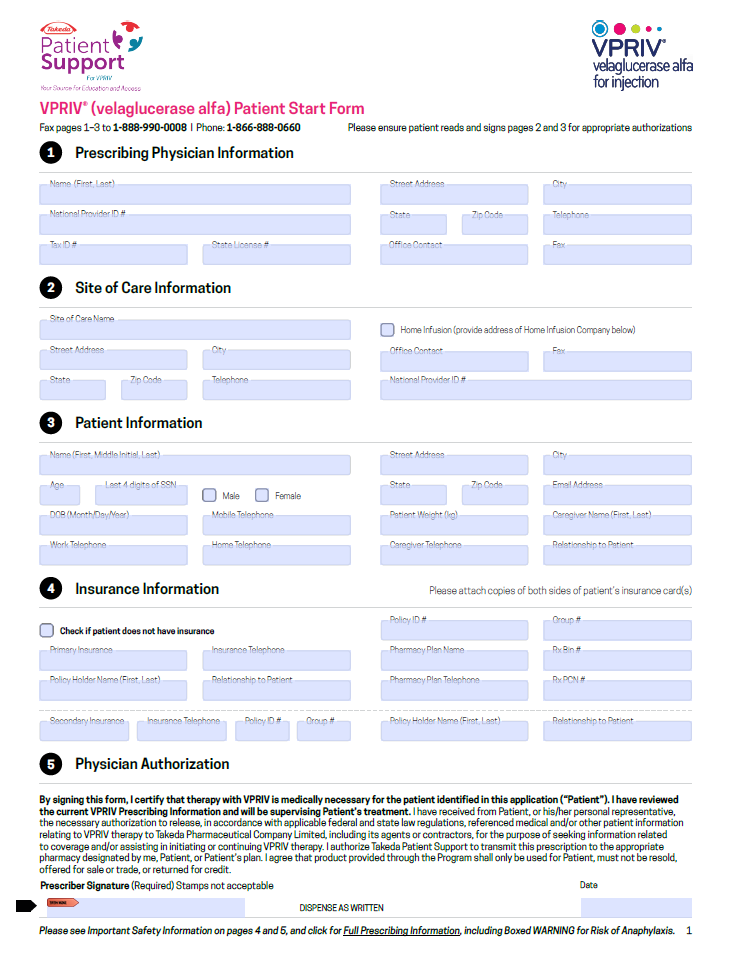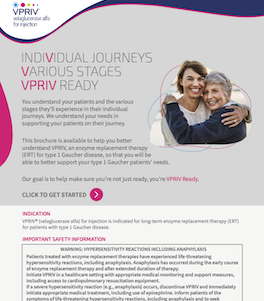stay connected!
Fill in the required fields to stay up to date with news and announcements about VPRIV.
*Required Field
thank you!
You have been successfully signed up to receive
communications from Takeda
Click here to unsubscribe

VPRIV READY
NATASHA — PREGNANT PATIENT*
*Patient profiles for illustrative purposes only and do not depict actual patients

Natasha was diagnosed as a teenager. After weighing the benefits and risks of various treatment options, together with her parents and her doctor, Natasha chose to start VPRIV.
When Natasha was 29 years old, she was eager to have her first child. Before becoming pregnant, she spoke to her doctor to discuss her pregnancy plan. Her doctor did not discourage her from considering pregnancy, and together, they ensured her type 1 Gaucher disease symptoms were brought under control to reduce the risk of possible complications during pregnancy, delivery, and postpartum.6,7
During her pregnancy, Natasha developed new symptoms; her hemoglobin and thrombocyte levels dropped.7 As part of her birth plan, her doctor adjusted her VPRIV dose to support her therapeutic goals.2 Her doctor arranged for her to give birth in a center where she had access to blood transfusions in case of postpartum symptoms.7 Natasha delivered a healthy baby. Natasha’s experience is her own and not every patient’s experience will be the same.
-
Existing symptoms such as anemia and thrombocytopenia can be exacerbated,
and new symptoms can develop, during pregnancy, which can increase the risk of
complications such as bleeding6,7 -
Real-world data in over 300 pregnancies have not identified an association with major birth defects,
miscarriage, or adverse maternal or fetal outcomes†2,5 -
Available data cannot definitively establish or exclude the absence of a VPRIV-associated risk during pregnancy2
†While available data cannot definitively establish or exclude the absence of a VPRIV-associated risk during pregnancy, these data have not identified an association with the use of VPRIV during pregnancy and major birth defects, miscarriage, or adverse maternal or fetal outcomes2,5
- Additional information on the use of VPRIV in pregnant patients with type 1 Gaucher disease can be found in the Prescribing Information, and further information on Gaucher disease during pregnancy can be found in VPRIV Resources
CLICK ON EACH PATIENT BELOW TO READ THEIR STORY†:
Patient MATEO College
Student ALISON Patient Preference DONNA Other Medical
Considerations MICHAEL Delayed
Diagnosis JOHN Geriatric
Patient
IMPORTANT SAFETY INFORMATION
WARNING: HYPERSENSITIVITY REACTIONS INCLUDING ANAPHYLAXIS
Patients treated with enzyme replacement therapies have experienced life-threatening hypersensitivity reactions, including anaphylaxis. Anaphylaxis has occurred during the early course of enzyme replacement therapy and after extended duration of therapy.
Initiate VPRIV in a healthcare setting with appropriate medical monitoring and support measures, including access to cardiopulmonary resuscitation equipment.





